“I need some Teak for an upcoming project.”
“Great, how much do you need and what kind of specs?”
“800 board feet of at least 6″ width, and I want it to be A grade stuff.”
“Okay, we have FEQ, that’s First European Quality, Teak and the width isn’t a problem; any length spec?”
“At least 12 foot lengths.”
“Okay, great, let me work up a quote, and I’ll get you some numbers…”
Buying lumber is a complex topic. The above conversation happens hundreds of times every day between lumber buyers and lumber dealers. The species and specifics may change, but essentially this sums up the initial call. Can you see what could go wrong with this order?
When you look at it on paper, it is a little scary just how much information is left out of this exchange. Everyone is busy, and ordering raw materials for a project is just something that has to be done so often that this exchange is more transactional and less conversational. When you consider that you are buying an organic, grown product that is full of variables, how can we possibly expect a satisfactory product without having a detailed conversation?
Off the top of my head, these questions come to mind:
- What is being built here?
- What further work will be done to these boards? Planing? Moulding? Pre-finishing?
- Is it exterior or interior usage? What kind of exposure will the board see?
- Does every board need to be 12 feet or is there a multiple to be met?
- What kind of waste per board will this width and length spec net?
- Does the footage estimate account for potential overage and how much?
These are all key to understanding what the customer needs, but the biggest question I would want to know that could lead to either a successful project or complete dissatisfaction is:
What does “A grade” mean to you, and what does “A grade” mean to your customer?
This is where grading systems fall apart. Everyone demands top grade these days, yet in most instances, the criteria to meet top grade is below what is expected from the buyer and end customer. The net result is that we ship out some material, and only some of it fits the quality bill, leaving the builder short on material or possibly at odds with their own customer on the final appearance. At the same time, some of the original material purchased goes unused. I specifically chose Teak in the above example, because the price tag per board foot is such that no one can really just ignore waste.
Every species is going to have its idiosyncrasies, and a grading system won’t recognize that, because grading systems are meant to universally apply to all species. Because of this, lumber companies and builders will develop their own way of qualifying what is needed. Sometimes this is based on the cut, such as rift sawn, quartersawn, or just vertical grain.
Other times, terms like pattern, or center matched are used to refer to how each board is cut in relation to the overall tree in order to give a symmetrical grain appearance.
All heart or 90% heartwood is also thrown around to indicate the level of heartwood in each board. This is something that NHLA grading systems don’t account for, so the top grade, FAS, won’t capture that level of detail.
Then there are things that don’t refer to the cut or grade of individual boards, but which indicate how individual boards relate to the rest of the boards in the job. Color matching is most common here. For a high end job where the boards will be installed and aesthetics are of utmost importance, a board with a different color will stick out like a sore thumb and be rejected. Imagine if this level of detail is required by your customer or your customer’s customer, and imagine just how much “waste” will stack up if a random pack of lumber is sent.
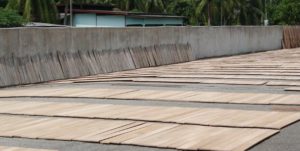
Now factor in that many species will change color dramatically when they are freshly milled (like Teak, Mahogany, or Cherry), and color matching may not be possible until the wood has oxidized or been exposed to the sun for a while. Lead time will now be required to really match colors, or the buyer must be prepared to take some boards that may not match or which will take many months in order to equalize the color.
Be Specific, Ask Questions, or Expect to Answer Them
These are just a few potential issues that can arise when we don’t get specific about the grade or what the final expectations are on the wood’s appearance. The issue lies in no standard way to classify all of this. And a standard “above grade” classification would cause more problems, since there are just too many variables to do this cleanly. However, whether your are a lumber dealer or manufacturer, home builder or contractor, we all need to be asking our customer what they mean by “top grade” or “grade A,” or what they mean even when they request something specific like FEQ or FAS lumber.
Let’s be honest: getting specific like this will probably cost you more money. Anytime a larger volume of lumber needs to be culled and picked over in order to find a specific cut or color, the price will rise. But weigh this additional cost against potential lost time, higher waste, and worst of all, an unhappy customer, and I think you will see you will save money in the end.
So ask questions and be specific when buying your lumber, and expect the person selling the lumber to you to ask just as many questions. It is also possible that in the end, your request may not even be possible, and an alternative solution will need to be devised. Gone are the days when we can assume that any width or length or appearance is possible, but you just might be surprised what is possible when we all have the same expectations.
Learn more about the lumber industry:

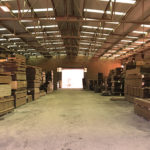
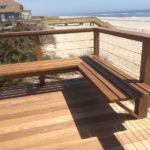

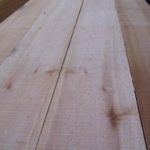
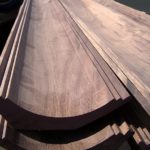
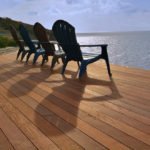


Hi Shannon,
I have been reading lots of your articles. Just wanted to know do you think synthetic teak alternative usage in marine is increasing. Is teak losing its share in the marine industry.
Regards,
Swarup
I do not think Teak is losing share in marine. However it is gaining in the building trades as home product. But that really should be apples and oranges because nautical Teak and home Teak are very different grade products. In the end Teak is very expensive and only getting more expensive as global supply gets smaller and smaller. Needed regulation and and sustainability efforts have reduced the amount available and we can only hope those efforts will be successful because the Myanmar Teak market hasn’t had much accountability in recent years and a lot of damage has been done to the forests. New regulation and certification programs are getting started and log export bans kick in next week. This has reduced the global supply amounts so what is shipping is much more expensive and therefor restrains it usage to only the very high end boats. In many ways I think this is a good thing to protect the product but also to maintain its value. If every boat had Teak on it it would lose meaning.